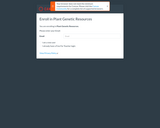
It is a useful and essential course.
- Subject:
- Applied Science
- Material Type:
- Homework/Assignment
- Author:
- Shoba D
- Date Added:
- 08/19/2019

It is a useful and essential course.

This resource is a video abstract of a research paper created by Research Square on behalf of its authors. It provides a synopsis that's easy to understand, and can be used to introduce the topics it covers to students, researchers, and the general public. The video's transcript is also provided in full, with a portion provided below for preview:
"Researchers at the RIKEN Center for Sustainable Resource Science have developed a new genetic pathway that can be used to co-opt E. coli bacteria to produce maleate, one of the most important industrial chemicals in use today. A chief component in the coatings of substances like nylon and galvanized steel and an important stabilizing agent in pharmaceuticals, maleate is typically produced through harsh treatments of crude oil. But by using genetically engineered microorganisms to produce maleate, the researchers have developed a much more sustainable approach. Maleate is the end product of a complex chemical reaction. Bacteria don’t normally come equipped with machinery to power this reaction, so the researchers had to design a ground-up approach before they could start harvesting maleate. This required careful analysis of the intermediates needed for maleate synthesis and the identification of genes that could help E. coli make each of these molecules..."
The rest of the transcript, along with a link to the research itself, is available on the resource itself.

This resource is a video abstract of a research paper created by Research Square on behalf of its authors. It provides a synopsis that's easy to understand, and can be used to introduce the topics it covers to students, researchers, and the general public. The video's transcript is also provided in full, with a portion provided below for preview:
"Gene regulation plays a critical role in human development and disease, including cancer. Genes are regulated by a family of proteins called transcription factors. One such molecule is GLI3, a member of the "Hedgehog" signaling pathway. GLI3 can switch genes ON (such as in development and cancer) and switches gene expression OFF in Hedgehog signaling. This central molecule is important for tissue development in the brain and lungs and for the development and activation of immune cells such as B, T and NK cells. GLI3 is upregulated in many cancers, promoting growth, angiogenesis, and tumor cell proliferation and migration, but interestingly, in certain cancers, GLI3 has an anti-tumor role. and its pro-cancerous role can be modulated by GLI3-targeting microRNA. Understanding GLI3-mediated signaling will clarify its roles in disease, development, and cancer, laying the foundation to target this critical molecule in immune and cancer therapies..."
The rest of the transcript, along with a link to the research itself, is available on the resource itself.
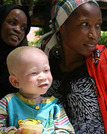
By the end of this section, you will be able to:Explain Mendel’s law of segregation and independent assortment in terms of genetics and the events of meiosisUse the forked-line method and the probability rules to calculate the probability of genotypes and phenotypes from multiple gene crossesExplain the effect of linkage and recombination on gamete genotypesExplain the phenotypic outcomes of epistatic effects between genes
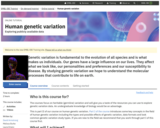
Genetic variation is fundamental to the evolution of all species and is what makes us individuals. Our genes have a large influence on our lives. They affect what we look like, our personalities and preferences and our susceptibility to disease. By studying genetic variation we hope to understand the molecular processes that contribute to life on earth.
By the end of the course you will be able to:
List examples of genetic variation databases
Describe the type of data found in different genetic variation databases
Explore genetic variation data within publicly available resources
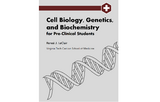
Cell Biology, Genetics, and Biochemistry for Pre-Clinical Students (2021) is an undergraduate medical-level resource for foundational knowledge across the disciplines of genetics, cell biology and biochemistry. This USMLE-aligned text is designed for a first-year undergraduate medical course that is delivered typically before students start to explore systems physiology and pathophysiology. The text is meant to provide the essential information from these content areas in a concise format that would allow learner preparation to engage in an active classroom. Clinical correlates and additional application of content is intended to be provided in the classroom experience. The text assumes that the students will have completed medical school prerequisites (including the MCAT) in which they will have been introduced to the most fundamental concepts of biology and chemistry that are essential to understand the content presented here. This resource should be assistive to the learner later in medical school and for exam preparation given the material is presented in a succinct manner, with a focus on high-yield concepts.
The 276-page text was created specifically for use by pre-clinical students at Virginia Tech Carilion School of Medicine and was based on faculty experience and peer review to guide development and hone important topics.
Available Formats
978-1-949373-42-4 (PDF)
978-1-949373-43-1 (ePub) [coming soon]
978-1-949373-41-7 (Pressbooks) https://pressbooks.lib.vt.edu/cellbio
Also available via LibreTexts: https://med.libretexts.org/@go/page/37584
How to Adopt this Book
Instructors reviewing, adopting, or adapting parts or the whole of the text are requested to register their interest at: https://bit.ly/interest-preclinical.
Instructors and subject matter experts interested in and sharing their original course materials relevant to pre-clinical education are requested to join the instructor portal at https://www.oercommons.org/groups/pre-clinical-resources/10133.
Features of this Book
1. Detailed learning objectives are provided at the beginning of each subsection
2. High resolution, color contrasting figures illustrate concepts, relationships, and processes throughout
3. Summary tables display detailed information
4. End of chapter lists provide additional sources of information
5. Accessibility features including structured heads and alternative-text provide access for readers accessing the work via a screen-reader
Table of Contents
1. Biochemistry basics
2. Basic laboratory measurements
3. Fed and fasted state
4. Fuel for now
5. Fuel for later
6. Lipoprotein metabolism and cholesterol synthesis
7. Pentose phosphate pathway (PPP), purine and pyrimidine metabolism
8. Amino acid metabolism and heritable disorders of degradation
9. Disorders of monosaccharide metabolism and other metabolic conditions
10. Genes, genomes, and DNA
11. Transcription and translation
12. Gene regulation and the cell cycle
13. Human genetics
14. Linkage studies, pedigrees, and population genetics
15. Cellular signaling
16. Plasma membrane
17. Cytoplasmic membranes
18. Cytoskeleton
19. Extracellular matrix
Suggested Citation
LeClair, Renée J., (2021). Cell Biology, Genetics, and Biochemistry for Pre-Clinical Students, Blacksburg, VA: Virginia Tech Publishing. https://doi.org/10.21061/cellbio. Licensed with CC BY NC-SA 4.0.
About the Author
Renée J. LeClair is an Associate Professor in the Department of Basic Science Education at the Virginia Tech Carilion School of Medicine, where her role is to engage activities that support the departmental mission of developing an integrated medical experience using evidence-based delivery grounded in the science of learning. She received a Ph.D. at Rice University and completed a postdoctoral fellowship at the Maine Medical Center Research Institute in vascular biology. She became involved in medical education, curricular renovation, and implementation of innovative teaching methods during her first faculty appointment, at the University of New England, College of Osteopathic Medicine. In 2013, she moved to a new medical school, University of South Carolina, School of Medicine, Greenville. The opportunities afforded by joining a new program and serving as the Chair of the Curriculum committee provided a blank slate for creative curricular development and close involvement with the accreditation process. During her tenure she developed and directed a team-taught student-centered undergraduate medical course that integrated the scientific and clinical sciences to assess all six-core competencies of medical education.
Accessibility Note
The University Libraries at Virginia Tech and Virginia Tech Publishing are committed to making its publications accessible in accordance with the Americans with Disabilities Act of 1990. The HTML (Pressbooks) and ePub versions of this book utilize header structures and include alternative text which allow for machine-readability.
Please report any errors at https://bit.ly/feedback-preclinical

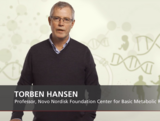
This presentation provides an introduction to the genetic aspects of non-autoimmune diabetes. First we’ll introduce the genetic basis of diabetes, then we’ll talk about methods to identify genetic loci associated with diabetes and pre-diabetic traits. In continuation of this, we’ll provide examples of monogenic forms of diabetes and finally we’ll discuss common forms of non-autoimmune diabetes.
Course responsible: Associate Professor Signe Sørensen Torekov, MD Nicolai Wewer Albrechtsen & Professor Jens Juul Holst


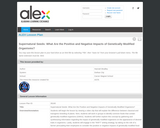
Students will begin the lesson by viewing a video clip that will explain the difference between classical and transgenic breeding of plants. Next, students will work in groups to identify common foods that contain genetically-modified organisms (GMOs). Students will further explore this concept by gathering and synthesizing information regarding the impact of genetically modified organisms on the appearance of desired traits in organisms. Lastly, students will engage in the "RAFT" writing strategy, by taking on the role of a farmer persuading their employees to consider the positive or negative impacts of genetically-modified food crops. This lesson results from a collaboration between the Alabama State Department of Education and ASTA.

This resource is a video abstract of a research paper created by Research Square on behalf of its authors. It provides a synopsis that's easy to understand, and can be used to introduce the topics it covers to students, researchers, and the general public. The video's transcript is also provided in full, with a portion provided below for preview:
"Obesity and metabolic disorders are abnormally high in the Middle East. According to the World Health Organization, approximately 41% of all deaths in Kuwait are caused by cardiovascular disease. And after the US, Kuwait is the nation with the highest rate of obesity in the world. While overeating and an increasingly sedentary lifestyle are partially to blame, they’re not the only culprits. A new study from the Dasman Diabetes Institute in Kuwait suggests that genetic adaptations once key to survival for Kuwaiti ancestors predispose today’s population to debilitating disease. Traits like insulin resistance and hypertension spell trouble for modern, largely sedentary humans. But for the nomadic forbearers of today’s Kuwaiti population, they offered an advantage. An active metabolism and high blood pressure stimulate the sympathetic nervous system’s “fight-flight-or-freeze” response, favoring survival under the harsh desert climate of the Arabian Peninsula..."
The rest of the transcript, along with a link to the research itself, is available on the resource itself.
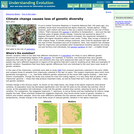
If you'd visited Tuolumne Meadows in Yosemite National Park 100 years ago, you probably would have encountered the alpine chipmunk, Tamias alpinus. Today, however, park visitors will have to hike up a nearby mountain to see one of these critters. That's because this species is sensitive to temperature and over the last hundred years of global climate change, Yosemite has warmed by about 5.5 degrees Fahrenheit. As the temperature increased, the chipmunks retreated to higher and higher elevations where it was cooler. Today, they occupy a fraction of their original range. If climate change continues, they could be squeezed right off the tops of their mountains and out of existence.

This resource is a video abstract of a research paper created by Research Square on behalf of its authors. It provides a synopsis that's easy to understand, and can be used to introduce the topics it covers to students, researchers, and the general public. The video's transcript is also provided in full, with a portion provided below for preview:
"The honey bee gut microbiome has a critical influence on bee health and is transmitted among members of a colony through social interactions. The bee microbiome is made up of a core set of bacterial groups that show high diversity among individuals at the strain level. While this variation has been shown to be clearly associated with numerous environmental factors, bee genetics may also play an important role. Researchers recently used DNA sequencing techniques to better understand how bee genetics affect gut microbiome structure. The team examined the genomes of four subspecies of lab-reared honey bees with those of their associated microbiomes. They noted that the abundance of most core gut microbiota members was influenced by host subspecies and also found a clear link between a Bifidobacterium strain in the gut and brain neurotransmitter and gene expression patterns..."
The rest of the transcript, along with a link to the research itself, is available on the resource itself.


This resource is a video abstract of a research paper created by Research Square on behalf of its authors. It provides a synopsis that's easy to understand, and can be used to introduce the topics it covers to students, researchers, and the general public. The video's transcript is also provided in full, with a portion provided below for preview:
"The gilthead sea bream is one of the most important fish farmed in the Mediterranean. Selecting for economically valuable genetic traits has helped improve bream farming efficiency. But little is known about the role played by intestinal microbes in selective breeding practices. To find out, researchers examined how genetic selection for different growth rates and diet affect intestinal bacteria in the gilthead sea bream. Bream were divided into three groups according to genetically selected growth rate: slow, intermediate, and fast, and were fed a plant-based diet, a sustainable alternative for the normally carnivorous gilthead sea bream. The plant-based diet significantly changed the microbial makeup of the slow- and intermediate-growth groups, with a much weaker effect observed for the fast-growth group. And when exposed to an intestinal parasite common to the gilthead sea bream, the fast-growth group showed significantly lower parasite intensity and abundance than the slow-growth group..."
The rest of the transcript, along with a link to the research itself, is available on the resource itself.



Students learn the principles of independent assortment and gene linkage in activities which analyze inheritance of multiple genes on the same or different chromosomes in hypothetical dragons. Students learn how these principles derive from the behavior of chromosomes during meiosis and fertilization.
